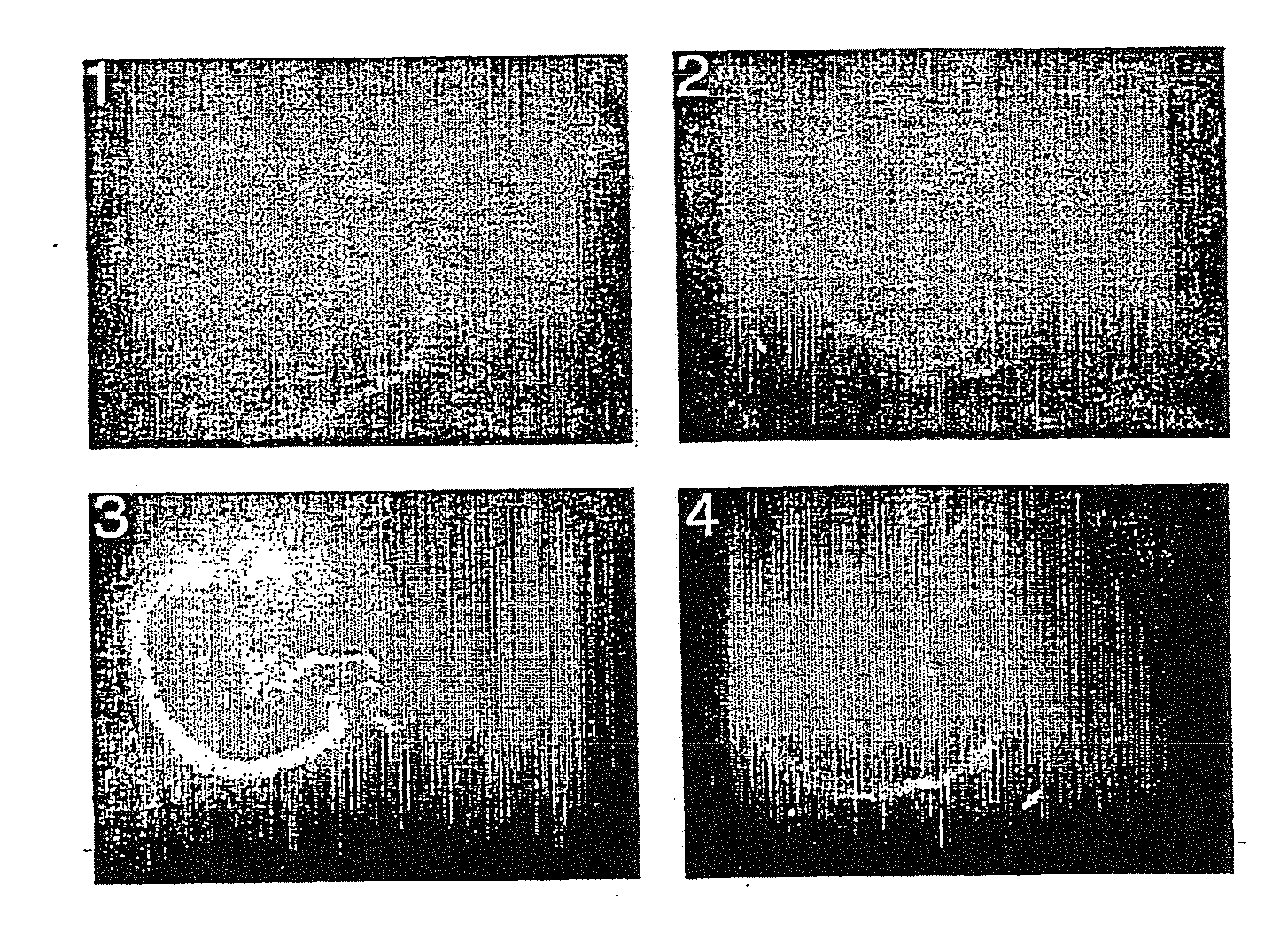Vaccine and method for treatment of neurodegenerative diseases
a neurodegenerative disease and vaccine technology, applied in the field of vaccines and methods for treating neurodegenerative diseases, can solve the problems of hd patients developing slurred speech, unsteady walking and swallowing, and damage to cells affecting cognitive ability (thinking, judgment, memory, etc., and achieve the effect of reducing disease progression and reducing disease progression
- Summary
- Abstract
- Description
- Claims
- Application Information
AI Technical Summary
Problems solved by technology
Method used
Image
Examples
example 1
Glutamate Toxicity—an In Vivo Model for Selection of Dose and Regimen of Cop 1 Vaccination
[0088]Glutamate is an amino acid normally present at low concentrations in the CNS, where it serves as the principal excitatory neurotransmitter. However, in many neurodegenerative diseases, glutamate levels rise to toxic levels, causing cell damage. This model was therefore chosen to establish Cop 1 neuroprotective vaccination and optimize the therapeutic regimen. Glutamate toxicity is assessed by intraocular injection of glutamate into the eyes of C57B1 / 6J mice and then measuring the subsequent death of RGCs, the neurons that carry visual signals to the brain.
1a. Cop 1 Dose Determination
[0089]To study the effect of the dose of Cop 1 vaccination on glutamate-induced RGC death, Cop 1 emulsified in complete Freund's adjuvant (CFA; 25, 75 or 225 μg Cop 1 in total volume of 100 μl) was injected subcutaneously at one site in the flank of C57BL / 6J mice, and seven days later glutamate (200 nmol) was ...
example 2
Correlation between the Cellular Immune Response to Cop 1 Vaccination and the Neuroprotective Effect
[0096]Two ex vivo markers correlate with the efficacy—the T cell stimulation index and interferon-γ (IFN-γ). The stimulation index indicates the extent to which Cop-1-responsive T cells are present in the lymphocyte population. IFN-γ secretion is characteristic of T cells of the “Th1” subtype. These markers thus provide a means of profiling the cellular immune response.
[0097]The correlation between the neuroprotective effect and the cellular immune response to Cop 1 vaccination was thus determined by in vitro evaluation of T-cell proliferation and the level-profile of cytokine secretion.
[0098]The effect of Cop 1 vaccination was examined by isolating splenic lymphocytes from mice immunized with different doses of Cop 1 (25, 75 and 225 μg / mouse), 7, 14, 21 and 28 days after immunization, and measuring the proliferative response of the splenocytes to Cop 1 by [3H]thymidine incorporation,...
example 3
In Vivo Animal Test System for Huntington's Disease
[0103]The beneficial effect of Cop 1 vaccination was examined for exertion of neuroprotective effects using the HD R6 / 2 transgenic mice test system. R6 / 2 transgenic mice over express the mutated human huntingtin gene that includes the insertion of multiple CAG repeats (Mangiarini et al., 1996). These mice show progressive behavioral-motor deficits starting as early as 5-6 weeks of age, and leading to premature death at 10-13 weeks. The symptoms include low body weight, clasping, tremor and convulsions (Carter et al., 1999).
[0104]Two different doses of Cop 1 vaccination were tested, 75 μg Cop 1 / mouse (n=13) and 150 μg Cop 1 / mouse (n=11), that were injected when the mice were 45 days old and every 4 weeks thereafter. A third group (n=12) was vaccinated with 75 μg Cop 1 / mouse on day 60 of age and every 4 weeks thereafter. The control group (n=17) was injected with PBS starting on day 45 of age and every 4 weeks thereafter. Motor neurol...
PUM
| Property | Measurement | Unit |
|---|---|---|
| thick | aaaaa | aaaaa |
| temperatures | aaaaa | aaaaa |
| temperature | aaaaa | aaaaa |
Abstract
Description
Claims
Application Information
 Login to view more
Login to view more - R&D Engineer
- R&D Manager
- IP Professional
- Industry Leading Data Capabilities
- Powerful AI technology
- Patent DNA Extraction
Browse by: Latest US Patents, China's latest patents, Technical Efficacy Thesaurus, Application Domain, Technology Topic.
© 2024 PatSnap. All rights reserved.Legal|Privacy policy|Modern Slavery Act Transparency Statement|Sitemap



